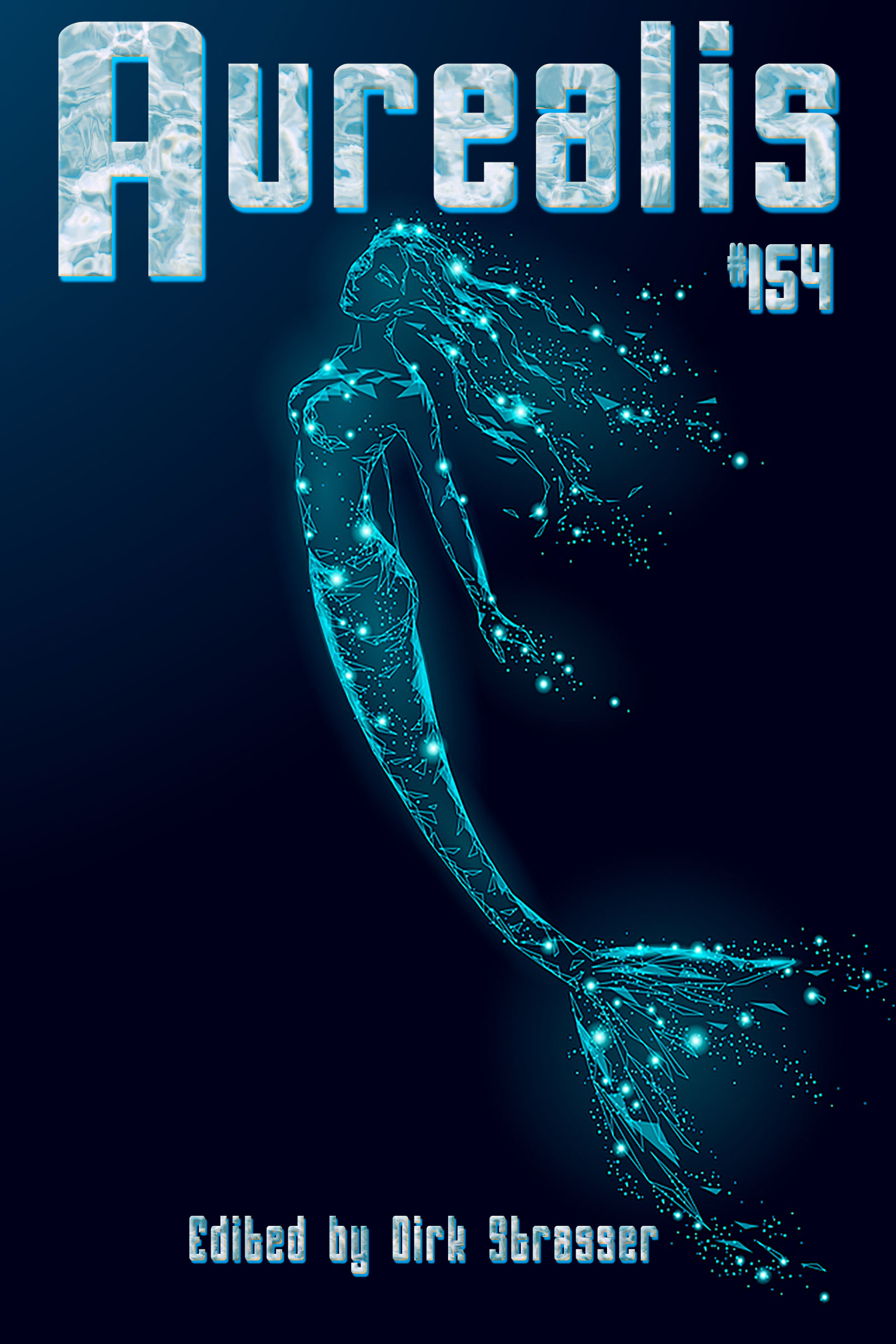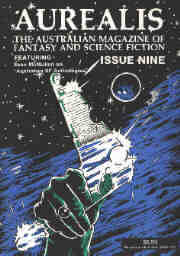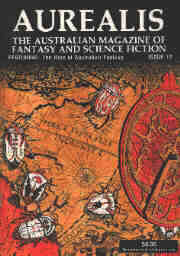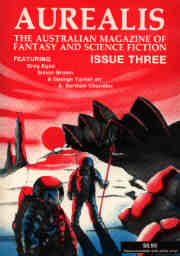Aurealis #154
$3.99
Take your time tasting the delicacies in Aurealis #154. First feast on the fiction: Aidan Doyle’s original and evocative time loop story, ‘Sword, Salmon, Castle’; John Kinsella’s dreamlike, meandering and lyrical ‘World Made Whole Again’ and Chris Butler’s absorbing mystery ‘The Sculptor’. Then savour the articles, illustrations and reviews.
- From the Cloud — Dirk Strasser
- Sword, Salmon, Castle — Aidan Doyle
- World Made Whole Again — John Kinsella
- The Sculptor — Chris Butler
- Pioneering SF Women - Alice Sheldon: What’s in a Name? — Lynne Lumsden Green
- Thinking About the Void — Gillian Polack
- Staying up After Dark with Alan Baxter — Chris Foster
- Rural Apocalypses and Outback Ends-of-the-World — Lachlan Walter
So, we now have the two most highly anticipated series of all time appearing on our screens simultaneously. And they’re both fantasy. Wow! The first episode of HBO’s House of the Dragon was watched by 10 million people, the largest audience for a premiere in HBO’s history, and The Rings of Power had 25 million viewers in its first 24 hours. The first episode of House of the Dragon had an 86% critic score on the Rotten Tomatoes website which was marginally better than The Rings of Power at 84%, so they both are rated highly.
I watched the two premiere episodes one after the other. (I know, not really what you would normally do, but it just worked out that way). I also avoided as much of the pre-release hype that I could and didn’t look at any reviews, so I knew very little about them.
I thought I’d give you my initial thoughts before I watch any more. One of my criteria for fantasy is the awe-metre. To what degree did I feel that sense of awe that the genre famously achieves in its greatest works? Prequels are not usually my first choice. Afterall, by definition, you know what eventually is going to happen (and in fantasy you also already know a lot about the world), so achieving the same level of tension and surprise is almost impossible. In fantasy, the world is often viewed as a character, and finding out about it is one of the joys of entering a fantasy world on screen and in print. Prequels inevitably struggle to reach the same heights on the awe-metre as the original. On the other hand, there’s the pleasure in entering a place that’s familiar to you. The most successful creative works tend to be the ones which successfully balance the interaction between the familiar and the new. Something that’s too familiar can feel dull, which something that’s too different can be jarring to many people. I would say House of the Dragon felt the more familiar of the two, while The Rings of Power registered higher on the awe-scale.
Both are stunning visually with sophisticated imagery and strong storylines. To me the first House of the Dragon episode feels more dour, violent and morally conflicted compared to The Rings of Power, but then that’s what the Game of Thrones franchise is at its essence. Given the classifications, the two are going for different audience demographics, so the difference makes sense. At this early stage (and of course I can easily be proven wrong), the The Rings of Power simply looks like it’s going to be more fun. The writers seem to be playing more with the source material. House of the Dragon so far comes across as even more relentlessly serious than the original series.
Okay, remember these were first impressions of the premiere episodes. I’ll definitely be assiduously watch both series to see where they take us. What a moment we are experiencing in the history of fantasy!
All the best from the cloud!
Dirk Strasser
From Sword, Salmon, Castle by Aidan Doyle:
The tiny clouds resembled fish scales scattered across an endless ocean. Hiroko paused by the river to savour the perfect afternoon. The sun shone through the yellow fiberglass tourist boats on the river, giving them the appearance of sparks drifting across the water.
From World Made Whole Again by John Kinsella:
Ophelia and Ophelia found each other because they were both called Ophelia on their separate half-worlds and now call themselves Ophelia because it makes them feel more certain about things.
From The Sculptor by Chris Butler:
Moon stared at the sign. She could just make out the words in the meagre light of the phosphorescent vines climbing the walls: DO NOT ENTER BEYOND THIS POINT.
From Pioneering SF Women - Alice Sheldon: What’s in a Name? by Lynne Lumsden Green:
James Tiptree Jr roared into the stratosphere of the SF community in the late 1960s, penning intricate stories exploring gender, identity, and death, or humorous tales poking fun at bureaucracy or traditions. It was soon obvious that his name was a pseudonym.
From Thinking About the Void by Gillian Polack:
Vandals of the Void matches its title. James Morgan Walsh’s 1931 novel is straight up science fiction of its time: there are invaders and they are destructive and much of the action happens in the space between planets.
From Staying up After Dark with Alan Baxter by Chris Foster:
Masterful crafter of over 100 supernatural thrillers, urban horror & dark fantasy tales from short stories to full novels, Alan Baxter’s resume is nothing short of prolific.
From Rural Apocalypses and Outback Ends-of-the-World by Lachlan Walter:
While writers from the US are the primary producers of post-apocalyptic fiction, and have historically set the template for the genre, here in Australia we have our distinctive take on it, which is perhaps best described as ‘rural apocalypses and outback ends-of-the-world’.
